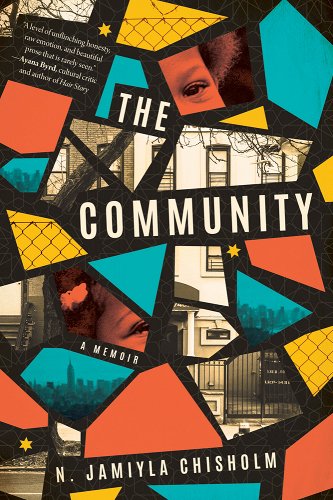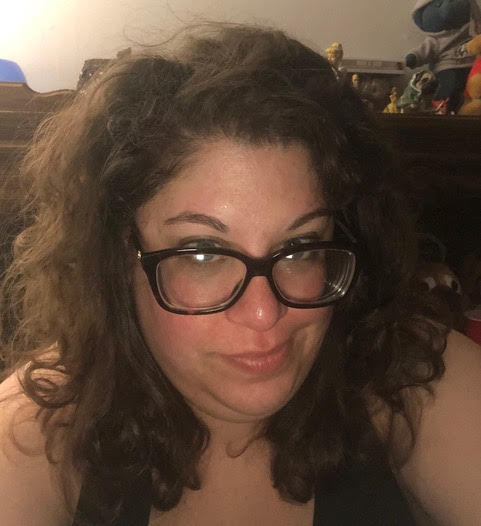Reviewed by Ashley Supinski
 In The Community: A Memoir (Little A, 2022), journalist N. Jamiyla Chisholm recounts the two years she and her parents spent in Dwight York’s cult, the Nuwaubian Nation, when she was just 4 years old. It is also the story of reconnecting with her mother, whom she calls Ummi, and releasing the pain she’s harbored since she was a child. In an honest, heartbreaking reflection, The Community: A Memoir is not a true-crime tale of a child’s growing up in a cult, but rather a young woman’s attempt to understand what drove her parents to join in the first place.
In The Community: A Memoir (Little A, 2022), journalist N. Jamiyla Chisholm recounts the two years she and her parents spent in Dwight York’s cult, the Nuwaubian Nation, when she was just 4 years old. It is also the story of reconnecting with her mother, whom she calls Ummi, and releasing the pain she’s harbored since she was a child. In an honest, heartbreaking reflection, The Community: A Memoir is not a true-crime tale of a child’s growing up in a cult, but rather a young woman’s attempt to understand what drove her parents to join in the first place.
Dwight York (also known as Malachai Z. York) started the Nuwaubian Nation, an Islamic religious movement, in the 1970s. Attempting to mirror the teachings of Malcolm X, he was charismatic, charming, but most of all narcissistic and self-rewarding as the cult’s leader. He drew members to his new religious movement through the promise of helping Blacks rise above the suppression they endured. His teachings of Islam and Black as a superior race drew Chisholm’s father, and eventually her mother, to his compound in New York City.
Writing about being a child growing up in the Community, Chisholm recounts memories of being beaten by Ums (the women in charge of watching children) for minor discretions, such as not speaking in Arabic or crying for her mother. One painful account recalls when the Ums locked her outside alone at night in the playground because she would not stop crying for Ummi. It’s easy to forget that Chilshom was only 4 when she lived in the Community, because her recollections are vivid and the anger she describes reads like that of a teenager, not a child. She writes, “The night was so big and mysterious I couldn’t face it. I was afraid of the moon overhead, spotlighting my every move.” She then goes on to describe the trees’ branches as “leering shadows” that “were signs of something evil.” While the event happened to a 4-year-old girl, it is the adult who is recollecting her emotions about that night.
As an adult, Chisholm blocked her time in the Community from her memory. When she started having recurring dreams about being in a room surrounded by women in monochrome (after being asked to write an article on York’s arrest for The Source), she confronted her mother about the dreams. Through a series of interviews and personal discussions, Ummi relayed their time in the Community. Through her mother’s stories, the author was able to finally understand the anger and resentment she held for her mother as a teenager and young woman, and to forgive her.
The story is as much about the relationship between a mother and daughter as it is about the Chisholms’ time in the Community and converting to Islam. Through her interviews with her mother, the author is finally able to understand why her mother stayed at the compound even though she was miserable (due to her inability to say “no” and her fear of losing her family) and what finally convinced her to leave (her husband’s affair and finding out she was pregnant).
The interviews add an intimacy to Chisholm’s memoir. A seasoned magazine writer, she develops a narrative around her mother’s actions within her apartment as Jamiyla asks her questions. The reader feels they are in the small New York apartment with both women, watching the interaction unfold in real time. After one particularly hard question (“Did you feel comfortable?”), Chisholm describes her mother’s actions: “Her eyes darted from the potato salad to my face with a look of shock. I felt I had misspoken, sounded too accusatory.”
Overall, Chisholm’s memoir isn’t just a compelling tale about a child’s short time in a cult, without the focus on the crimes committed by York and her father. Rather, it’s the story of a daughter’s healing and forgiving her mother for the choices she made. It’s a reflection on how those choices affected a young Black girl in the late 1970s in New York. In the Epilogue, she writes, “Once I forgave Ummi for the Community, I could look at how it shaped and soldered me…From today’s contentious cultural climate around Black lives, the police, Muslims…The Community…was essentially saying to anyone with eyes that Black lives mattered.” In the end, Chisholm understands the role of the Community in the lives of its members, even if she doesn’t agree with what happened within its walls.
It’s a beautifully written book, with prose that alternates between poetic and narrative interview, that tries to understand why so many flocked to York and his teachings, and why a mother made the choices she did.

Ashley Supinski
ReviewerAshley Supinski has an MFA with a focus on young adult fiction from the Maslow Family Graduate Creative Writing Program at Wilkes University. She works as an adjunct English professor in eastern Pennsylvania. She is currently pursuing a Master’s degree in psychology at Southern New Hampshire University and is a mental health advocate.


